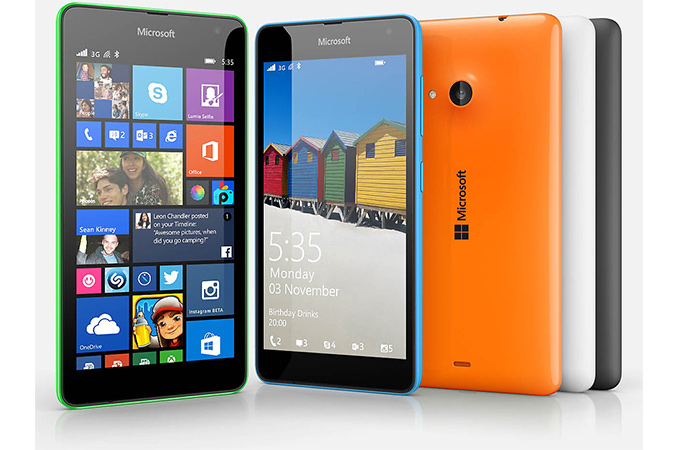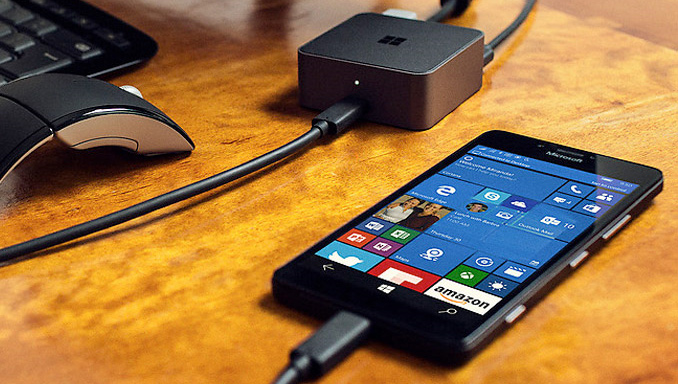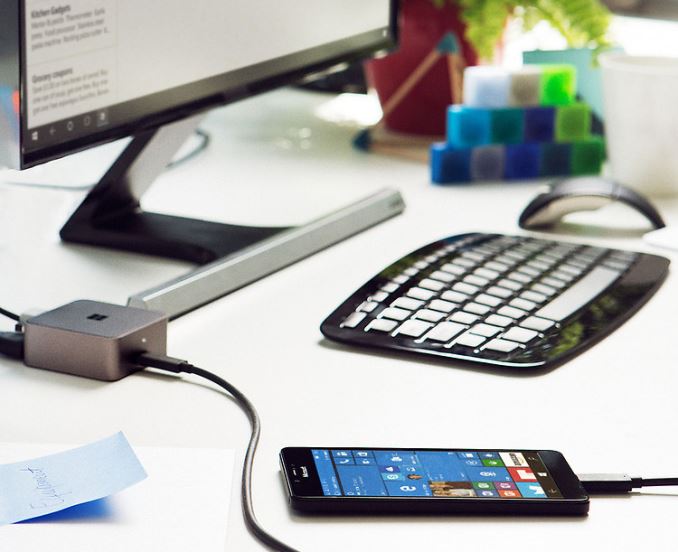Microsoft Streamlines Its Smartphone Business Again, Lays Off 1850 People
by Anton Shilov on May 25, 2016 4:45 PM EST- Posted in
- Smartphones
- Microsoft
- Nokia
- Lumia
- Windows 10 Mobile

Microsoft on Wednesday announced another reorganization of its smartphone business with plans to streamline operations and eliminate redundant personnel. The company will lay off 1850 of its employees in Finland and other countries and will take a $950 million charge. The actions seem to be in line with Microsoft’s plans to focus on development of flagship smartphones and leave the market of mass handsets.
When Microsoft closed its acquisition of Nokia in late April, 2014, it received approximately 25,000 new employees from around the world, who were involved into development, production, sales, and distribution of smartphones and feature phones. Shortly after, in July, 2014, Microsoft laid off 12,500 former Nokia staff as a part of its major reorganization, when it let go 18,000 Microsoft employees in total. The first wave of dismissals eradicated numerous positions at Nokia and shut down the division, which developed software for feature phones, leading to eventual elimination of Asha devices from Microsoft’s lineup.
A year after the company announced the first phase of streamlining, the software giant revealed further plans for phone business restructuring. In July, 2015, Microsoft decided take an impairment charge of approximately $7.6 billion related to assets associated with the acquisition of the Nokia Devices and Services business, and take a restructuring charge of approximately $750 million to $850 million. As part of its second phase of optimizations, the company laid off another 7,800 former Nokia employees globally. Besides, Microsoft announced their intentions to focus on flagship smartphones and generally to phase out inexpensive handsets going forward.
Today’s announcement further eliminates 1350 jobs in Finland as well as 500 additional jobs globally. The actions are to be fully completed by July, 2017, and will cost Microsoft approximately $200 million related to severance payments. Microsoft further noted that sales teams based in Espoo, Finland, will not be affected by the layoffs.
As a result of its optimizations of the handset business, by mid-2017 Microsoft will have eliminated approximately 21,650 former Nokia employees out of the iniitlal ~25,000 who joined Microsoft in 2014. Moreover, as 4,500 former Nokia staff are set to join FIH Mobile or HMD Global in the coming months, it means that by mid-2017 the absolute majority of the former Nokia employees will be gone from Microsoft.
Microsoft did not reveal any new plans concerning its smartphones going forward, but repeated what it said in 2015: the company will concentrate on flagship models and will support its traditional hardware partners with development of their smartphones featuring Windows 10 Mobile. The software giant sees security, manageability and Continuum feature as its key strengths on the smartphone market going forward, which essentially indicates that the company sees enterprises as the main customers for its handsets. Microsoft did not mention its PureView camera and other consumer focused assets it got from Nokia as its unique advantages to address consumers, which may indicate that the company no longer considers consumers as its main customers in the smartphone world.
“We are focusing our phone efforts where we have differentiation — with enterprises that value security, manageability and our Continuum capability, and consumers who value the same,” said Satya Nadella, chief executive officer of Microsoft. “We will continue to innovate across devices and on our cloud services across all mobile platforms.”
What the head of Microsoft did mention is that the company will continue to offer cloud-based services to all mobile platforms. Again, this is not something new as it emphasizes Satya Nadella’s cloud approach to mobile and his reluctance to fight against Apple, Google and Samsung in the world of mobile platforms and mobile hardware.
Source: Microsoft












78 Comments
View All Comments
QinX - Wednesday, May 25, 2016 - link
I've been a Windows Phone advocate for a long while (Not WP7 but right when the Lumia 1020 was released) and all the news I've read lately I just feel they should just give up.They are doing with Windows 10 Mobile the same as the always to with gaming.
We are going to be better! NOT!
Windows on Mobile is dead and they should just give up.
JoeyJoJo123 - Wednesday, May 25, 2016 - link
They should stick to what they're good at. Unfortunately with the telemetry-ridden Windows 10, I don't even think they're good at making OSes, either.But now that I think of it, they're pretty good at disappointing long-time customers, so I think they _are_ sticking to what they're good at, after all.
boozed - Wednesday, May 25, 2016 - link
What are they good at though?Their only strength in most markets seems to be incumbency.
beginner99 - Thursday, May 26, 2016 - link
Well I'm just upgrading an Ubuntu Server at work from LTS to LTS and I can say it's a painful experience and nothing close to as simple as it is made out to be. For example any "custom" stuff you have to recompile manually.Then the fact that the server is behind a proxy and not all apps don't stick to a standard so you have to configure each of them (one of them being apt itself) on initial setup.
Samus - Thursday, May 26, 2016 - link
It's true. The only Microsoft Cloud product I recommend to clients is hosted Exchange. It falls under the Office365 umbrella but plan "Exchange Online Plan 1" for $4/month gives each user 50GB, full ActiveSync, spam protection, the domain is blacklist protected, and the full collaborative suite of Outlook (Calendar sharing, etc)Considering Google charges $2 more per year ($50 instead of $48) for Gmail "Business" which STILL doesn't provide "ActiveSync" it really sucks for people who like using a mail client instead of a web browser (the best Google can offer to them is IMAP which is shit)
Every other Microsoft Cloud service is either inferior or noncompetitive. The elephant in the room, OneDrive, is just awful. Actually OneDrive is OK, but OneDrive Pro (based on Sharepoint) is just so damn unreliable and the clients are so awful, it's pretty obvious why Microsoft bought Dropbox. They need engineers to fix Sharepoint. Additionally, Office 2016 and all the new products in modern Office are crap. Lync is too complex, OneNote is clunky, Skype for Business is too proprietary/unsupported, and what the hell, exactly, is Sway supposed to do?
Lastly. Azure. Wow. It is unreliable, proprietary, requires Powershell to do anything low level, and EXPENSIVE. It isn't even close to competing with AWS (Amazon Web Services) in flexibility or price. The only reason this product is so successful is because IT depts are too lazy to learn AWS, and talk their top brass into paying out the ass for the "ease" for Azure and "plug & play" approach it has to connecting to Server 2012. The irony is I actually have a script to configure AWS accounts to the security schema and SAMBA revision required to plug into Server 2012 perfectly. Everything from Cloud Backup to simple file sharing works. Unless you need a virtual domain controller in the cloud, AWS handles everything.
Microsoft will innovate or die. They are making money, but the world is obviously catching up to them and they are NOT turning the YoY profits at the same margins they used too. Their profits are all in entirely different sectors than they were just a few years ago. Who would have thought the XBOX "consumer products" division would have higher margins than "mobile" in this market.
Microsoft should have bought Palm, not Nokia. At least Palm consistently had more market share.
LuxZg - Thursday, May 26, 2016 - link
Sorry, when did Microsoft buy Dropbox?nathanddrews - Thursday, May 26, 2016 - link
They didn't, I think he's thinking of this:https://news.microsoft.com/2014/11/04/microsoft-an...
Kvaern1 - Thursday, May 26, 2016 - link
I can't agree with your conclusions.We're using Office 365 (2016) at work and everything works pretty much flawlessly (on 10 year old PC's too) except OneDrive for Business, which a is piece bug ridden shit that requires constant maintenance to keep running.
Kvaern1 - Thursday, May 26, 2016 - link
btw can someone tell me what the logic is in Office caching Onedrive office files which is already residing on your PCs SSD?I've lost count of the amount of times I've had to delete the entire office cache to make OneDrive work again after having broken down.
Garbage.
Weaux - Thursday, May 26, 2016 - link
The latest version of the OneDrive for Business client no longer uses the Office cache, which has been a miracle for us.Uninstall the Groove-based version that was bundled with 2016 and start testing "next-gen" client available on the web. It's orders of magnitude more reliable than the old version, uses less space and makes coffee for you in the morning.
And I agree - the old Groove client was hot trash rotting in the sun.